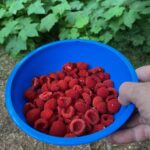By Mark Jones

Bubbles. Bubbles are a brilliant idea. I wish I had thought of it.
The sheer brilliance of some inventions fills me with envy. Many innovations create awe. The iPhone. I could immediately see how important it was. It was a collection of inventions put together to create a cool product. There was no one invention that stood out. I never invested energy in figuring out what would make a better phone. I hadn’t really spent a single clock cycle investigating needs, gaps, and potential solutions in phones. The iPhone created awe, but not envy.
We’ve all heard of Thomas Edison. Reading about him inspired awe, not envy. He made R&D a process. He identified problems and created an organization to attack those problems. He cranked out inventions, but most were optimizations, built on the work of others and made by a team he employed. Alessandro Volta, Warren de la Rue, and Joseph Swan all could claim to have invented the lightbulb. Edison figured out how to make it practical, but he didn’t originate the idea that light could come from electricity. Optimization is certainly important, but it doesn’t invoke envy. I reserve envy for those inventions demonstrating a flash of creativity, those inventions that appear obvious once you see them, those inventions that make me wish I had thought of it.
Before bubbles, the work of Russell Morris Selevan set my standard for an envy-invoking invention. Selevan elegantly assembled three simple components. Here, I was overcome with envy, slapping my forehead because I hadn’t thought of it when I first saw Selevan’s invention. I used self-inflating mattresses for backpacking. I am well aware of check valves from exposure to hydraulic, pneumatic, and laboratory systems. I was aware of the whoopee cushion.
Russell Morris Selevan was granted a patent for coupling a foam core, a check valve, and a whoopee cushion — inventing the self-inflating whoopee cushion. Whoopee cushions are hard to blow up. He took components I knew well and solved the problem. The inventive moment Selevan experienced eluded me. I am still envious.
Bubbles simply made me envious. I’ve thought long and hard about the problem of plastic in the environment. I know much of the plastic pollution reaching the ocean comes out of rivers. I stood on the banks of the Mississippi, counting a piece of plastic trash about every 8 seconds, watching all the boat traffic on the river. I felt it was impossible to capture the plastic while allowing the boats to pass. I just couldn’t imagine a way.
Others were more imaginative than me. The Great Bubble Barrier collects plastic while allowing boat traffic with bubbles. A curtain of bubbles at an angle relative to the flow of the river lifts and diverts plastic toward the bank for collection. I wish I had thought of it. I’m envious. Others are trying to dissuade my envy by pointing out that pneumatic barriers are commonly used. The envy is still there. It is such a simple and elegant solution to a problem I pondered — without imagining a solution.
You may also like:
Filed Under: Commentaries • insights • Technical thinking








